The WAS Project—Waterscape Archaeology in Sicily at Isola delle Femmine (PA, Italy): Submerged and Emerged Heritage
Abstract
:1. Introduction
1.1. The WAS Project
1.2. The Location
1.3. Archaeological and Historical Framework
1.4. Diving in the Marine Protected Area Capo Gallo–Isola delle Femmine
2. Materials and Methods
2.1. Methodology and Main Instruments
2.2. Instruments and Geomatic
2.3. Education
3. Results
3.1. Underwater Cultural Heritage Surveys and Archaeological Finds
3.2. Built Heritage
3.2.1. The Sea Tower
3.2.2. The Land Tower
4. Discussion
5. Conclusions
5.1. Historical and Technical Considerations
5.2. Implementation for Sustainable Archaeological Diving
Funding
Data Availability Statement
Acknowledgments
Conflicts of Interest
References
- Bucci, G. Coastal Zone Culture: Towards a hermeneutic of Waterscape Archaeology. In Proceedings of the International Conference on Coastal Ecosystem and Management, Expert Opinion on Environmental Biology, Amsterdam, The Netherlands, 16–17 September 2019; p. 15. [Google Scholar]
- Balletti, C.; Beltrame, C.; Costa, E.; Guerra, F.; Vernier, P. Underwater photogrammetry and 3D reconstruction of marble cargos shipwreck. In Proceedings of the International Archives of the Photogrammetry, Remote Sensing and Spatial Information Sciences, Underwater 3D Recording and Modeling, Piano di Sorrento, Italy, 16–17 April 2015; pp. 7–13. [Google Scholar] [CrossRef]
- Menna, F.; Nocerino, E. Hybrid survey method for 3D digital recording and documentation of maritime heritage. Appl. Geomat. 2014, 6, 81–93. [Google Scholar] [CrossRef]
- Nocerino, E.; Menna, F. Photogrammetry: Linking the World Across the Water Surface. J. Mar. Sci. Eng. 2020, 8, 128. [Google Scholar] [CrossRef]
- Catalano, R.; Basilone, L.; Maggio, C.D.; Morticelli, M.G.; Agate, M.; Avellone, G.; Contino, A.; Valenti, V.; Vaccaro, F.; Lena, G.; et al. Note illustrative della Carta Geologica d’Italia alla scala 1: 50.000, foglio 594–585, Partinico-Mondello Progetto CARG-ISPRA Ambiente; 2013. Available online: https://www.isprambiente.gov.it/Media/carg/note_illustrative/585_594_Partinico.pdf (accessed on 9 September 2022).
- Antonioli, F.; Chemello, R.; Improta, S.; Riggio b, S. Dendropoma lower intertidal reef formations and their palaeoclimatological significance, NW Sicily. Mar. Geol. 1999, 161, 155–170. [Google Scholar] [CrossRef]
- Pititto, F.; Torchia, G.; Catalano, D.; Greco, R.; Pelusi, P. Cartografia biocenotica di dettaglio delle “zone a” di un’area marina protetta mediante strumenti tecnologicamente avanzati. Biol. Marittima Mediterr. 2006, 13, 413–422. [Google Scholar]
- Uggeri, G. La viabilità della Sicilia in età romana. J. Anc. Topogr. Suppl. 2004, 144–148. [Google Scholar]
- Uggeri, G. Proposta di Inquadramento Diacronico dei castra bizantini della Sicilia. In La Sicilia Bizantina Storia, Città, Territorio. Triskeles. Caltanissetta; Feltrinelli: Milano, Italy, 2010; pp. 189–205. [Google Scholar]
- Mercadante, F. Da Balarm Palermo a Giazîrah isola: Il Porto di Gallo Ritrovato: Analisi Storico Ambientale Degli Approdi del Medioevo Arabo-Normanno Nel Territorio ad Occidente di Palermo Dall’itinerario Geografico di al-Idrīsī: Barqa, Marsà ạt-ṭīn, Ghālah, Giazîrah; Edizioni del Mirto: Palermo, Italy, 2001. [Google Scholar]
- Milanesi, L. Dizionario Etimologico della Lingua Siciliana, s.v. Isola delle Femmine; Mnamon: Trapani-Milano, Italy, 2012; pp. 5–6. [Google Scholar]
- Patitucci, S. Per una periodizzazione dell’insediamento bizantino nella Sicilia Orientale V Congresso Nazionale di Archeologia Medievale; All’Insegna del Giglio: Firenze, Italy, 2009; pp. 272–278. [Google Scholar]
- Maurici, F. Breve storia degli arabi in Sicilia; Flaccovio: Palermo, italy, 2006. [Google Scholar]
- Prigent, V. Pour en finir avec Euphèmios, basileus des Romains. Mélanges de l’École française de Rome. Moyen-Age tome 2006, 118, 375–380. [Google Scholar]
- Drocourt, N. Christian-Muslim diplomatic relations. In Christian-Muslim Relations, A Bibliographical History Volume 2 (900-1050); Thomas, D., Mallett, A., Roggema, B., Eds.; Brill: Leiden, The Netherlands, 2010; Volume 14, pp. 29–72. [Google Scholar]
- Wortley, J. John Skylitzes: A Synopsis of Byzantine History, 811–1057: Translation and Notes; Cambridge University Press: Cambridge, UK, 2010; pp. 811–1057. [Google Scholar]
- Spatafora, F.; Gandolfo, L. Il Salinas ricorda Salinas 1914–2014, Museo Archeologico Regionale “Antonino Salinas”, Palermo 8-07/4-11/2014. Assessorato dei Beni Culturali e dell’Identità Siciliana, Dipartimento dei Beni Culturali e dell’Identità Siciliana; Regione Siciliana: Palermo, Italy, 2014. [Google Scholar]
- Cosentino, G.C. L’architetto e l’arabista. Un Carteggio Inedito: Francesco Saverio Cavallari a Michele Amari (1843–1889) Trascrizione e Note di Giuseppina Sinagra; Regione Siciliana: Plaermo, Italy, 2012. [Google Scholar]
- Maurici, F. Sicilia bizantina: Gli insediamenti del palermitano. Arch. Stor. Sicili. 1994, 20, 27–94. [Google Scholar]
- Maurici, F.; Fresina, A.; Militello, F. Le Torri Nei Paesaggi Costieri Siciliani (Secoli XIII–XIX) Vol. 1–3; Regione Siciliana: Palermo, Italy, 2008. [Google Scholar]
- Lo Faro, A.; Rodríguez-Navarro, P.; Santagati, C.; Mangani, M. Coastal towers in the Mediterranean of XVI century: A comparison between Sicilian and Valencian cases. In Defensive Architecture of the Mediterranean. XV to XVIII Centuries/ Vol VI: 329–336; Avilés, G., Ed.; Editorial Publicacions Universitat d’Alacant: Alicante, Spain, 2017. [Google Scholar]
- Purpura, G. Pesca e stabilimenti antichi per la lavorazione del pesce in Sicilia: II-Isola delle Femmine (Palermo), Punta Molinazzo (Punta Rais), Tonnara del Cofano (Trapani), San Nicola (Favignana). Sicil. Archeol. 1985, 18, 59–96. [Google Scholar]
- Purpura, G. Rinvenimenti sottomarini nella Sicilia Occidentale. Archeol. Subacquea3, Supplemento al n. 37-38/1986 del Boll. d’Arte del Minist. per i Beni C. e Ambient.i 1986, 139–160. [Google Scholar]
- Tusa, S. Rinvenimenti archeologici subacquei presso Isola delle Femmine. Archeol. Subacquea 1997, 2, 65–73. [Google Scholar]
- Roberto, L.R. Isola delle Femmine: Un’ipotesi di insediamento economico polifunzionale e autosufficiente per la lavorazione del pescato. Sicil. Archeol. Anno XXXVII 2004, 102, 171–185. [Google Scholar]
- La Rocca, R. Evoluzione storica dell’alieutica in Sicilia modelli produttivi, organizzazione strutturale e dinamiche commerciali. In Maria, Lacus et Flumina-Studi di Storia, Archeologia e Antropologia “in Acqua” dedicati a Claudio Mocchegiani Carpano; Marazzi, M., Pecoraro, G., Tusa, S., Eds.; Bagatto Libri: Rome, Italy, 2016; pp. 254–321. [Google Scholar]
- La Rocca, R.; Bazzano, C. Impianti alieutici siciliani e atelier ceramici in età Imperiale. In Atti delle Giornate Gregoriane, Agrigento, X edizione (10-11 dicembre 2016); Caminneci, V., Parello, M.C., Rizzo, M.S., Eds.; Bibl. Archaeol. 50 Edipuglia: Bari, Italy, 2016; pp. 1–6. [Google Scholar]
- Available online: https://www2.regione.sicilia.it/beniculturali/archeologiasottomarina/sez_news/news_18_19_20_21.htm (accessed on 12 June 2022).
- Available online: https://www.facebook.com/sopmare/photos (accessed on 6 November 2021).
- Available online: https://www.mite.gov.it/pagina/area-marina-protetta-capo-gallo-isola-delle-femmine (accessed on 12 June 2022).
- Available online: http://www.ampcapogallo-isola.gov.it/istituzionale/la-fruizione/percorsi-naturalistici/ (accessed on 9 October 2019).
- Nobili, A.; Palmisano, M.E. Il Patrimonio Ritrovato Navi, Sottomarini e Aerei dei Nostri Fondali; Regione Sicilia: Palermo, Italy, 2010. [Google Scholar]
- Available online: https://www.cmas.org/science/standards (accessed on 12 June 2022).
- Kapitan, G. Ancient anchors—Technology and classification. Int. J. Naut. Archaeol. Underw. Explor. 1984, 13, 33–44. [Google Scholar] [CrossRef]
- Ridella, R.G. General descritione del’artiglieria che si ritrova nel regno di Corsica e isola di Capraia-bocche da fuoco nelle fortificazioni costiere genovesi. In Politiche e Sistemi di Difesa Degli Stati Della Corona di Spagna in Età Moderna-Corsica tra Cinque e Seicento-Convegno Internazionale di Studi (Villasimius-Baunei, 20-24/09/2005). CNR; Anatra, B., Mele, M.G., Murgia, G., Serreli, G., Eds.; Contra Moros Y Turcos: Cagliari–Milano, Italy, 2008; pp. 289–314. [Google Scholar]
- Beltrame, C. Ancore antiche dai litorali di Venezia e Caorle. Riv. Di Archeol. 1993, 17, 42–45. [Google Scholar]
- Ciabatti, E. L’archeologo subacqueo-Manuale di ricerca e scavo. Nistri-Listri. Pisa, 1984. Archeol. Subacquea 1984, 41, 142. [Google Scholar]
- Avilia, F. La Storia Delle Ancore; Ireco: Formello (RM), Italy, 2007. [Google Scholar]
- Minneci, A. Isola Delle Femmine (PA). Isolotto Visto da Un Drone Dji Spark. 2017. Available online: https://www.youtube.com/watch?v=tPfoSV1iI3o (accessed on 23 March 2020).
- Maurici, F. Torre in Terra di Isola Delle Femmine. In Le Torri Nei Paesaggi Costieri Siciliani (Secoli XIII–XIX): Torri del Val Mazara; Maurici, F., Fresina, A., Militello, F., Eds.; Regione Siciliana, Assessorato dei Beni Culturali, Ambientali e Della Pubblica Istruzione, Dipartimento Dei Beni Culturali, Ambientali e Dell’educazione Permanente: Palermo, Italy, 2008; Volume II, pp. 170–175. [Google Scholar]
- Maurici, F.; Lucido, A. Torre di fuori di Isola delle Femmine. In Le Torri nei Paesaggi Costieri Siciliani (Secoli XIII–XIX): Torri del Val Mazara; Maurici, F., Fresina, A., Militello, F., Eds.; Regione Siciliana, Assessorato dei Beni Culturali, Ambientali e Della Pubblica Istruzione, Dipartimento dei Beni Culturali, Ambientali e Dell’educazione Permanente: Palermo, Italy, 2008; Volume II, pp. 176–184. [Google Scholar]
- Available online: https://en.unesco.org/underwater-heritage (accessed on 12 June 2022).
- Manglis, A.; Fourkiotou, A.; Papadopoulou, D. A Roadmap for the Sustainable Valorization of Accessible Underwater Cultural Heritage Sites. Heritage 2021, 4, 4700–4715. [Google Scholar] [CrossRef]
- Mañas, C.P.-R.P.-R.; Andreo, F.C.; Osorio, P.L.L.; Gallero, R.G.G.; Mariscal, L.; González, A.A. Underwater Cultural Heritage as an Engine for Social, Economic and Cultural Development. State of Research at the University of Cadiz (Andalusia, Spain). Heritage 2021, 4, 2676–2690. [Google Scholar] [CrossRef]
- Manglis, A.; Giatsiatsou, P.; Papadopoulou, D.; Drouga, V.; Fourkiotou, A. Implementing Multi-Criteria Analysis in the Selection of AUCHS for the Integration of Digital Technologies into the Tourism Offering: The Case of MeDryDive. Heritage 2021, 4, 4460–4472. [Google Scholar] [CrossRef]
- Koutsi, D.; Stratigea, A. Sustainable and Resilient Management of Underwater Cultural Heritage (UCH) in Remote Mediterranean Islands: A Methodological Framework. Heritage 2021, 4, 3469–3496. [Google Scholar] [CrossRef]
- Gambin, T.; Sausmekat, M.; Kovacevic, D. The Innovative and State of the Art Public Access Management of Malta’s Underwater Cultural Heritage. Heritage 2021, 4, 3365–3381. [Google Scholar] [CrossRef]
- Gambin, T.; Bravo-Morata Rodríguez, A.; Sausmekat, M. From Discovery to Public Consumption: The Process of Mapping and Evaluating Underwater Cultural Heritage in Malta. Heritage 2021, 4, 2732–2745. [Google Scholar] [CrossRef]

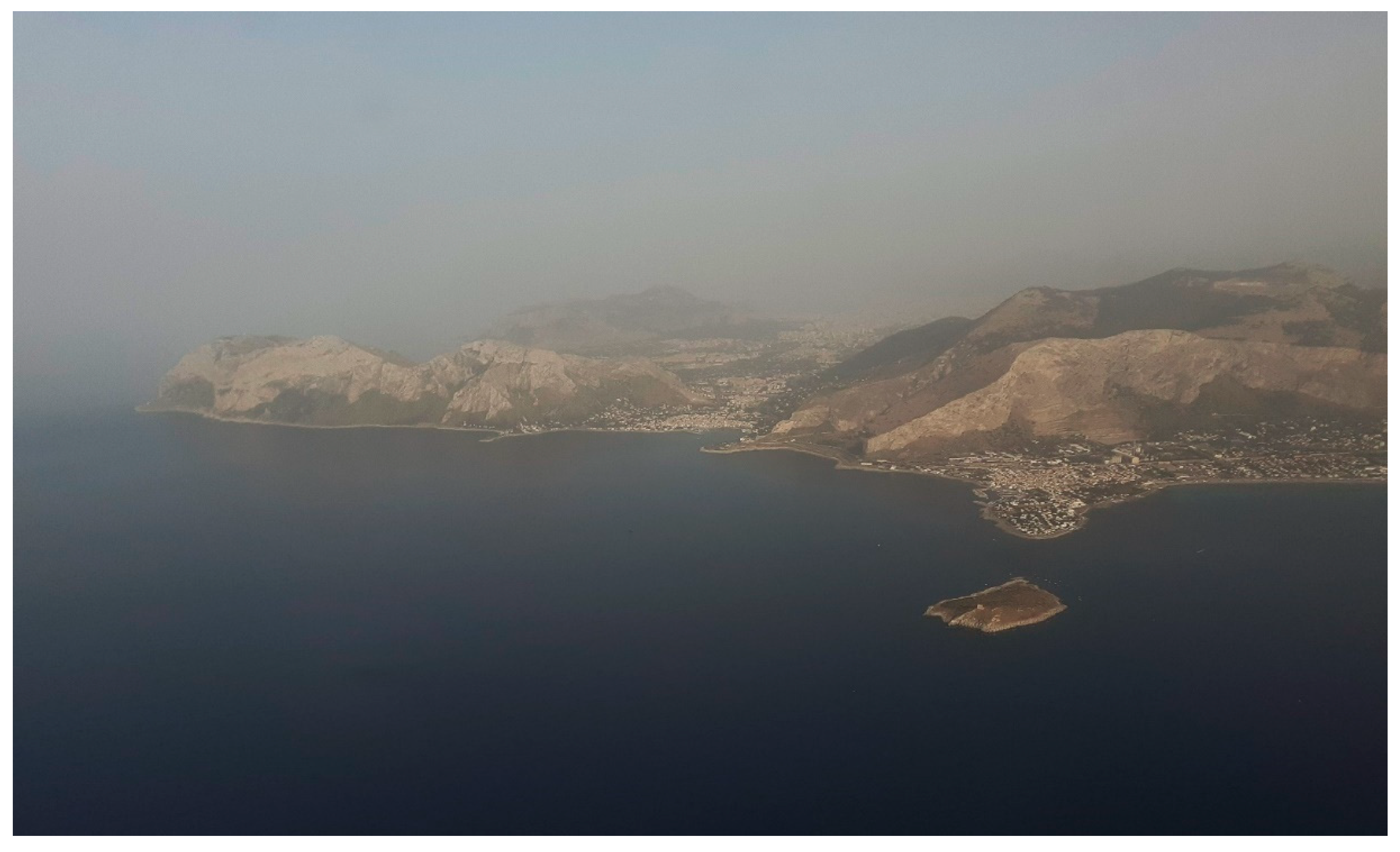
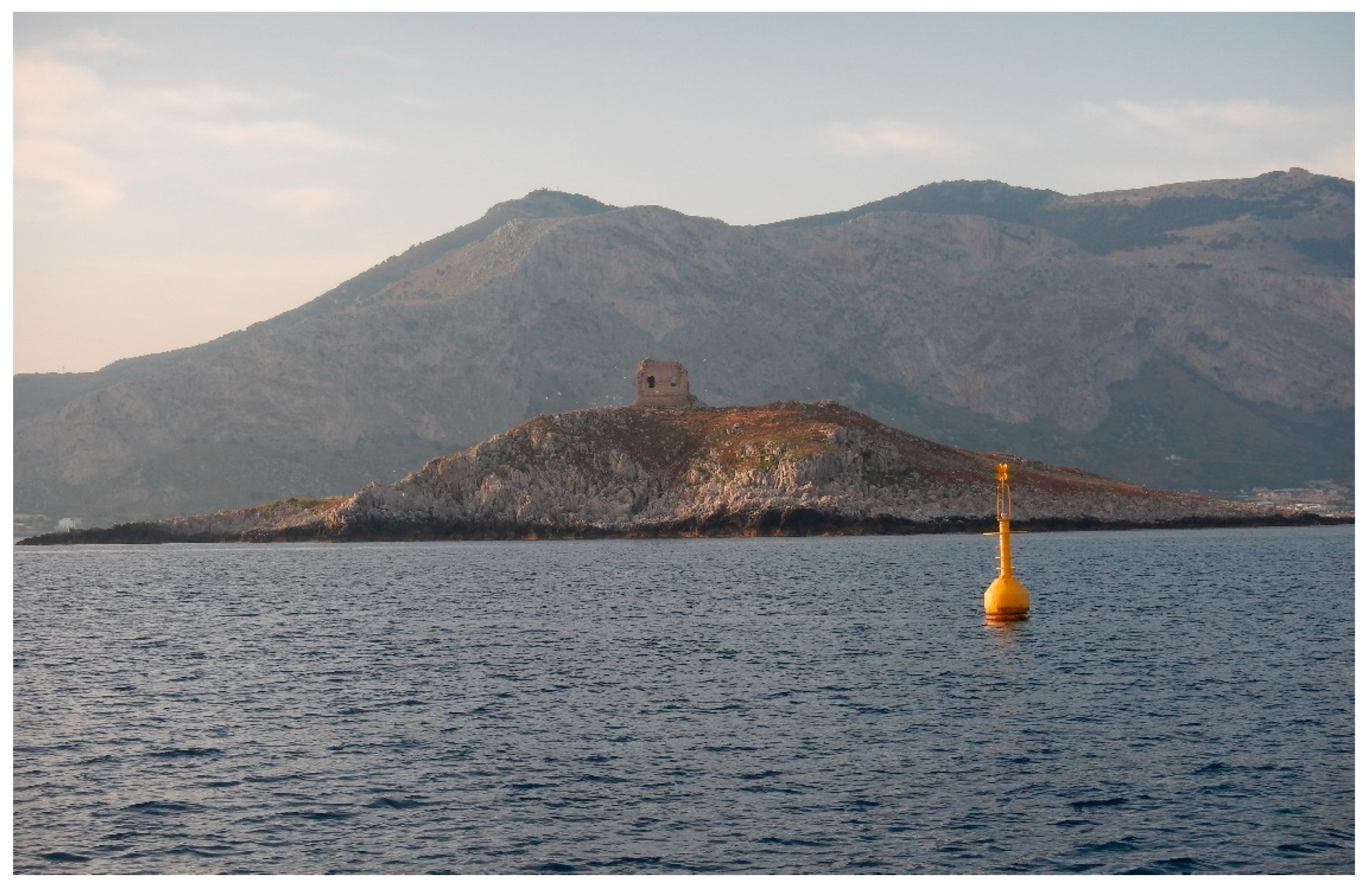
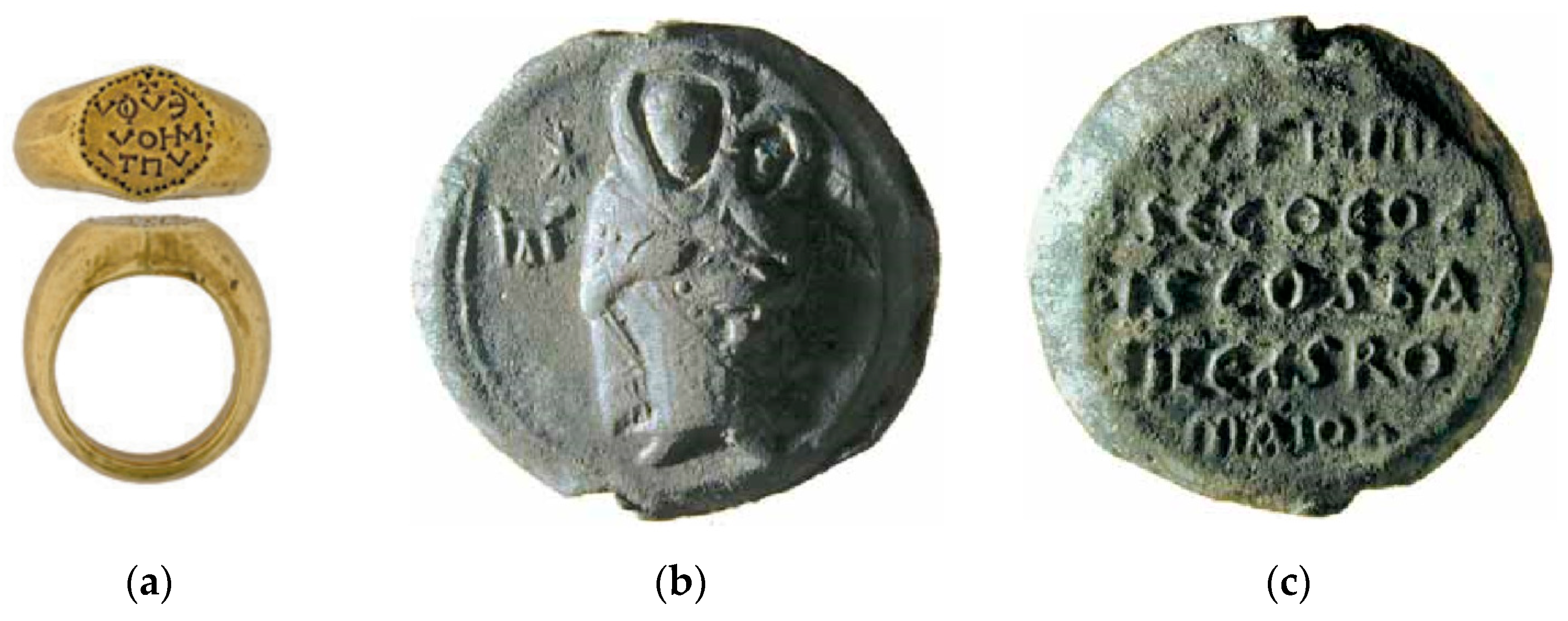
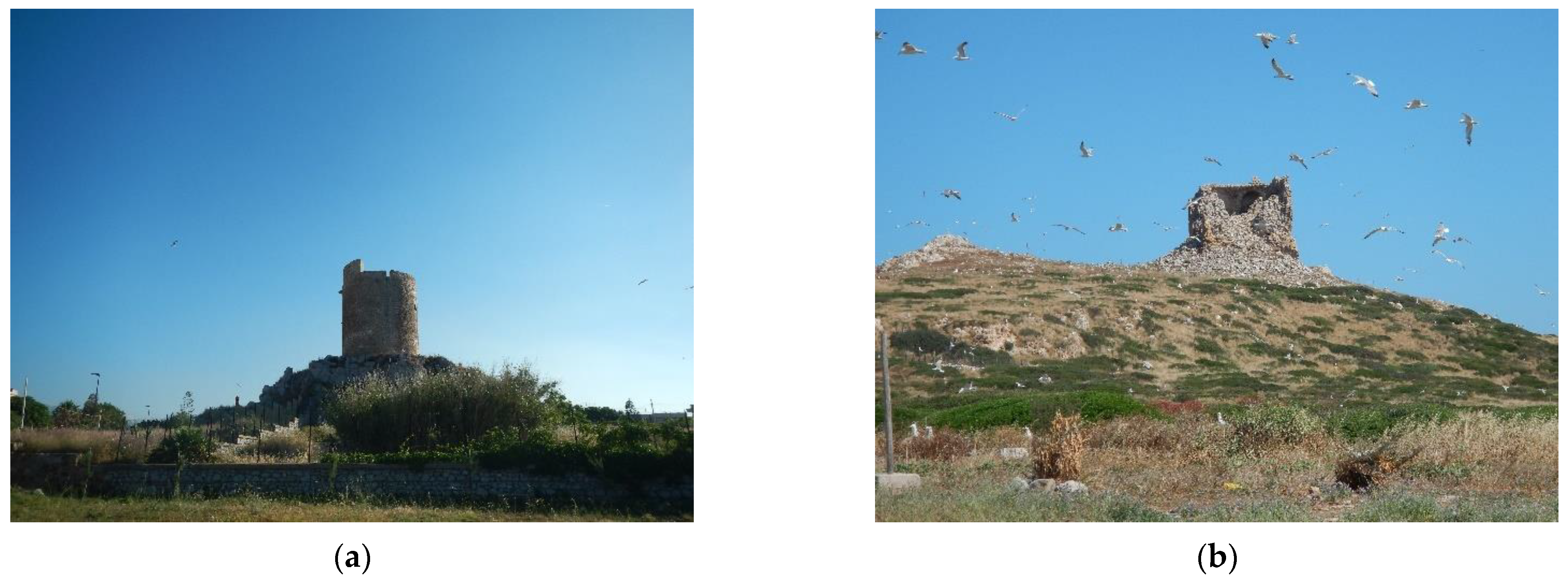
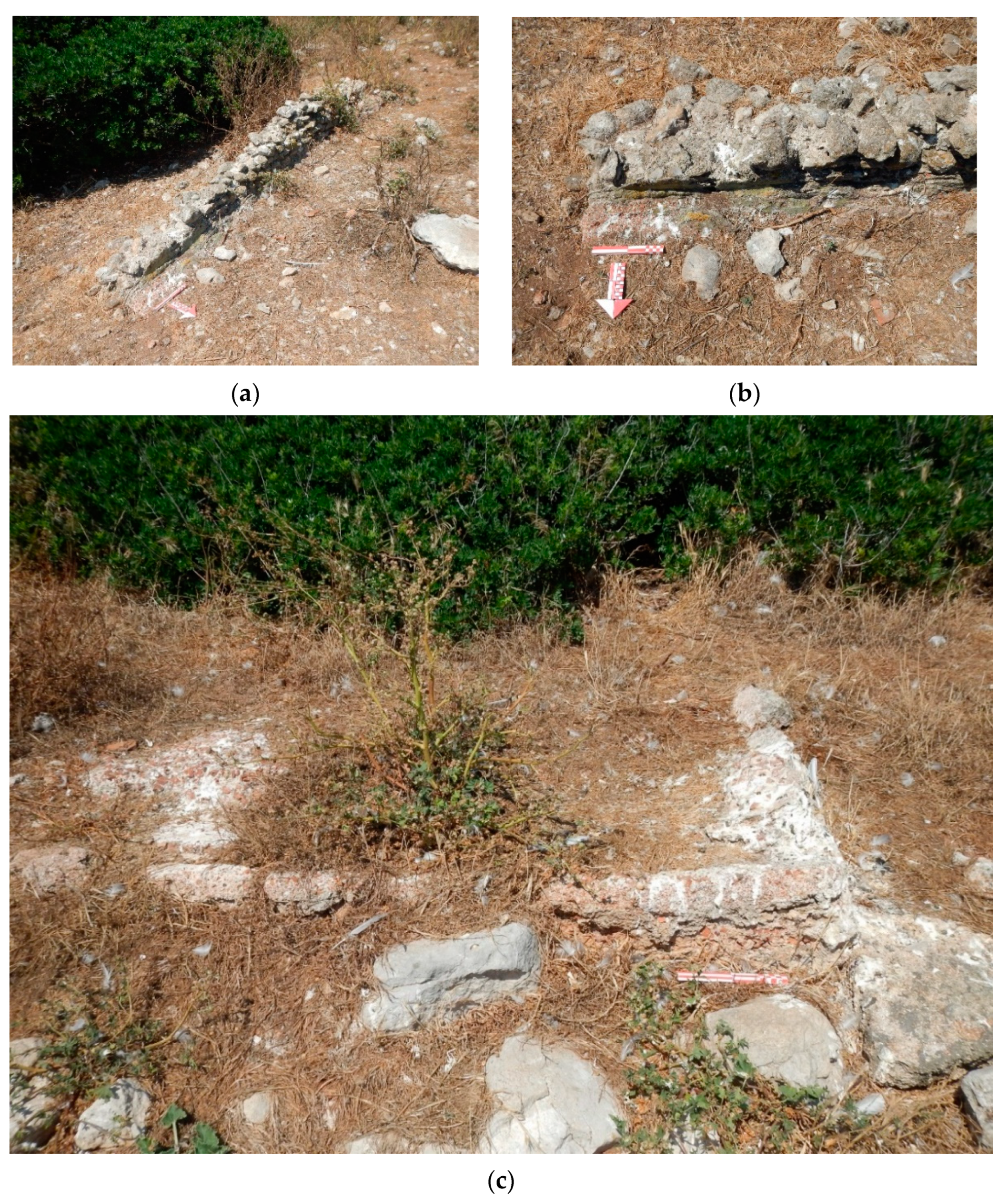
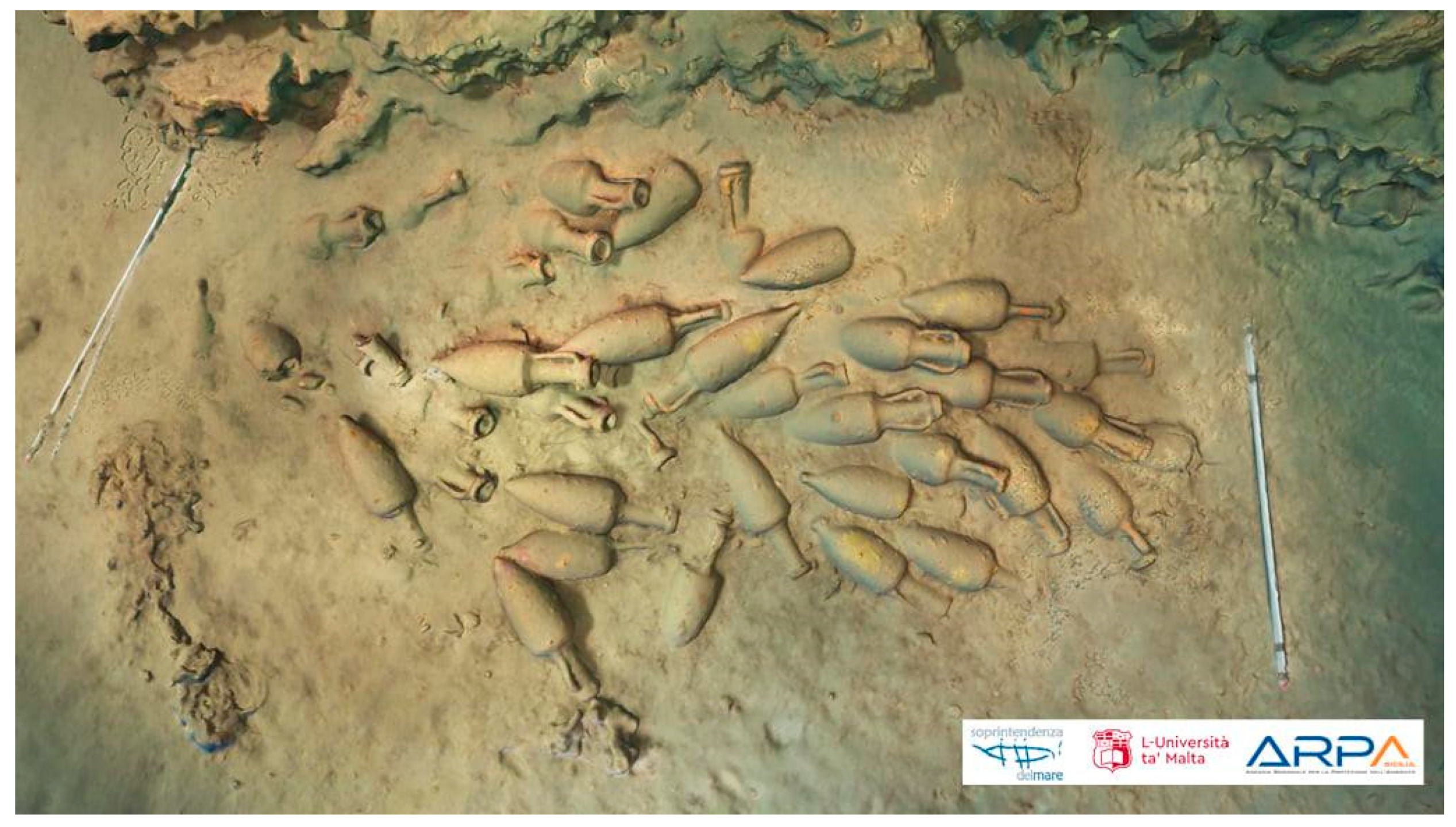
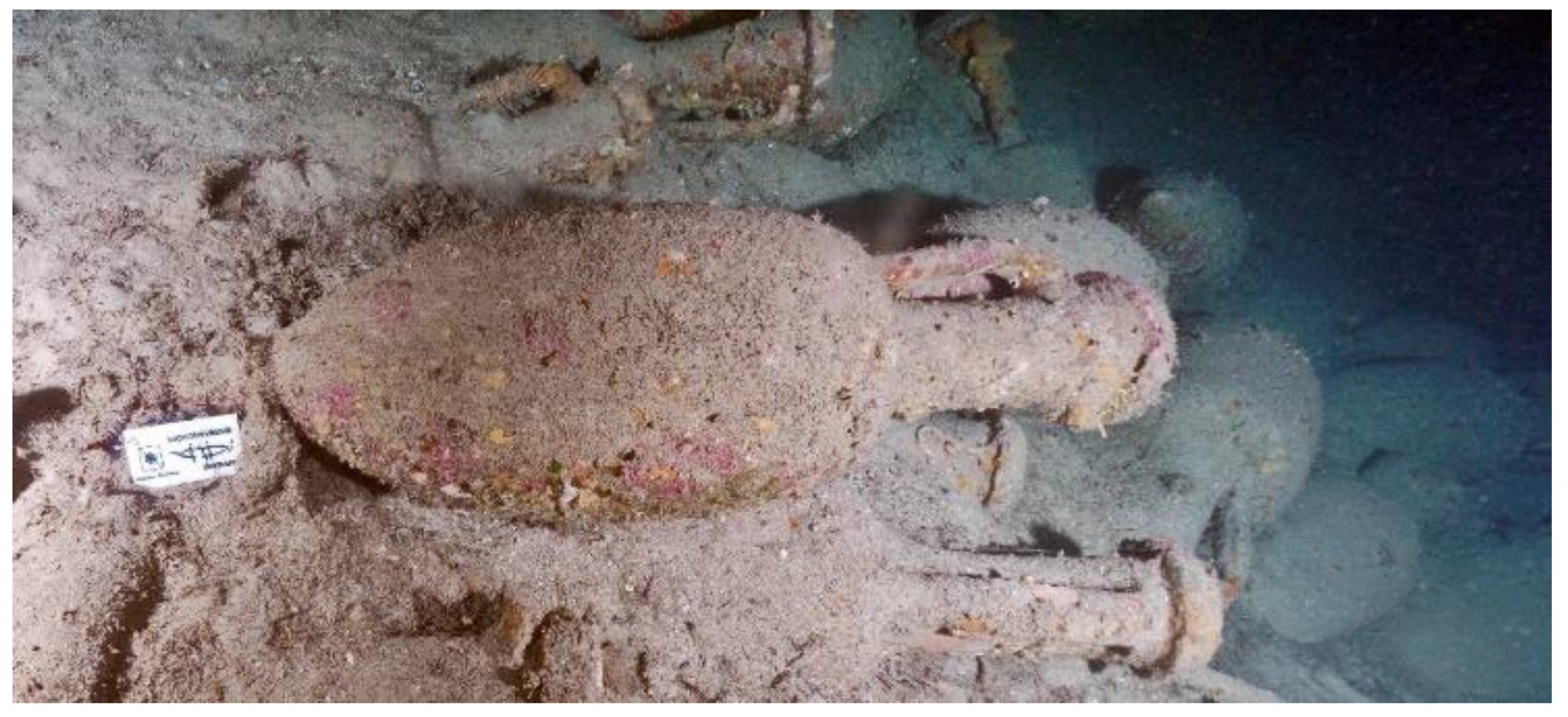

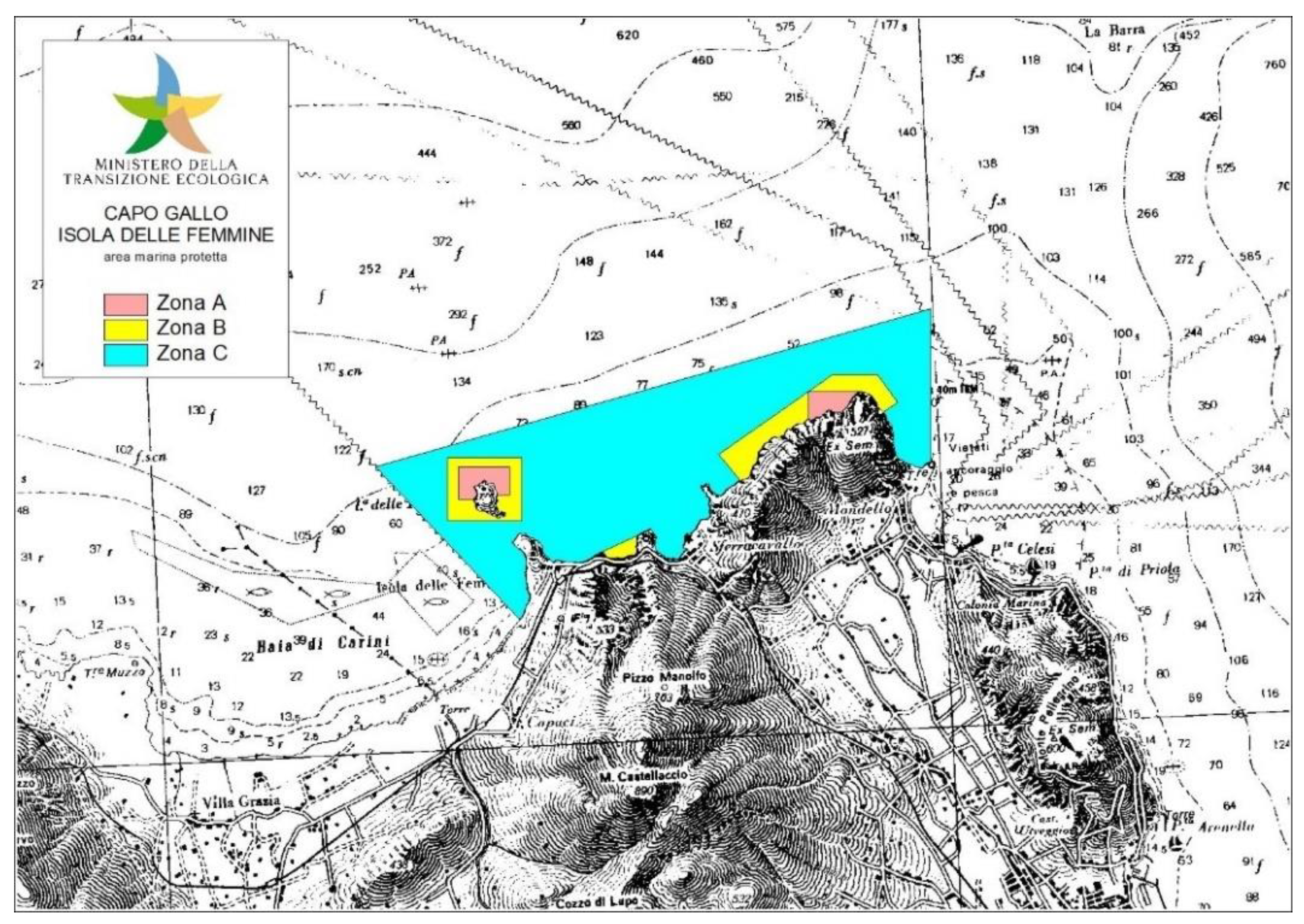
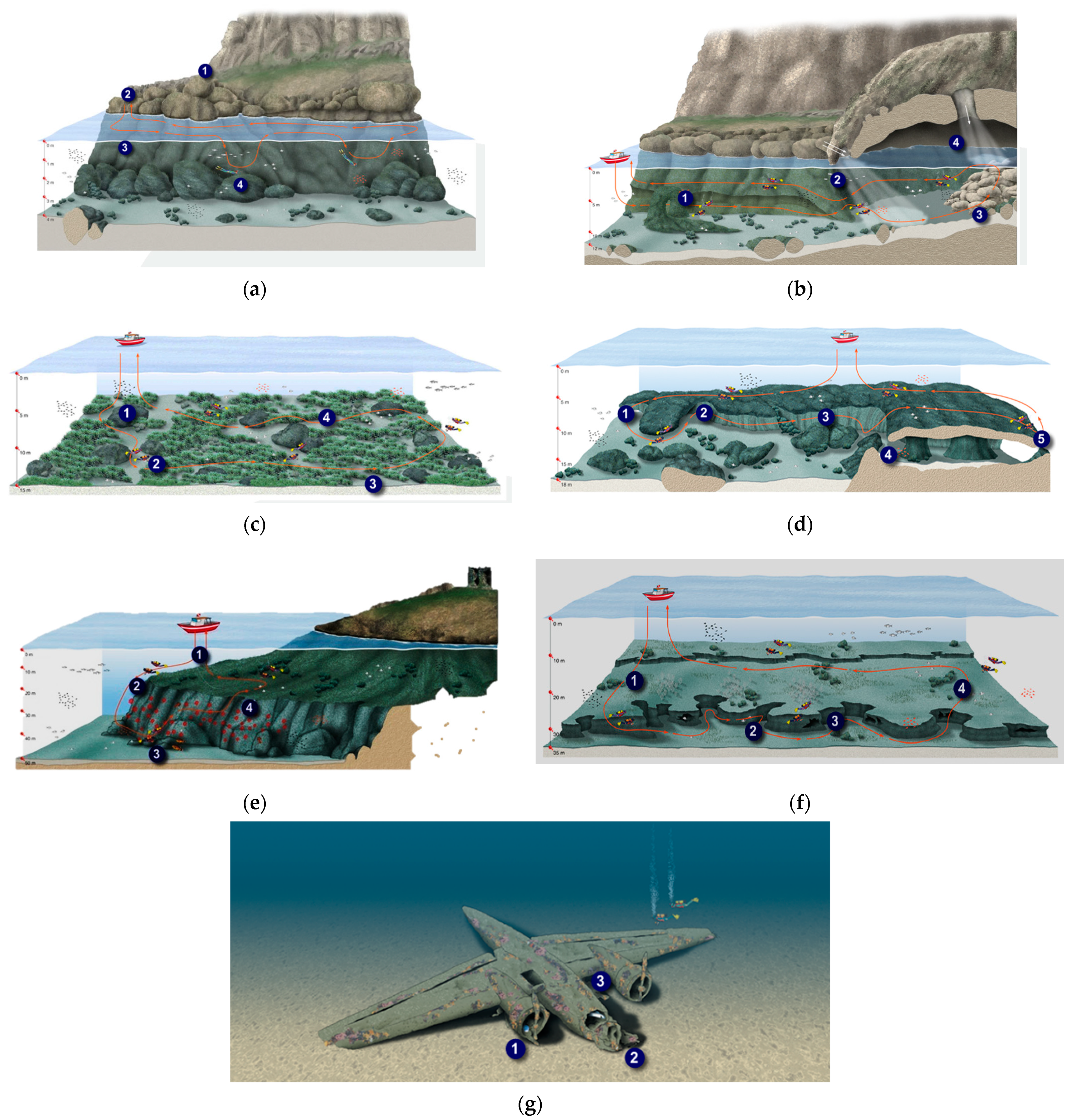
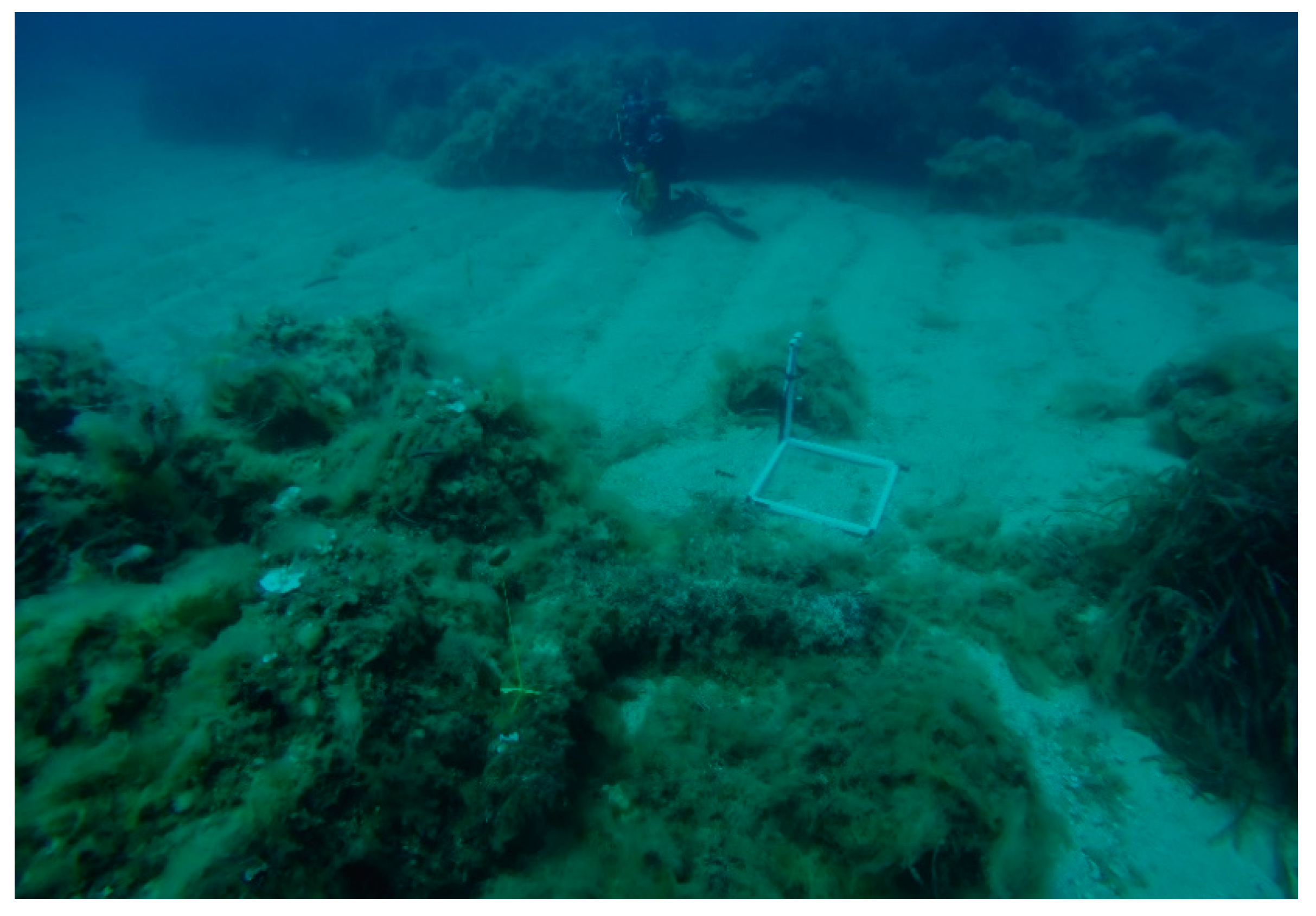
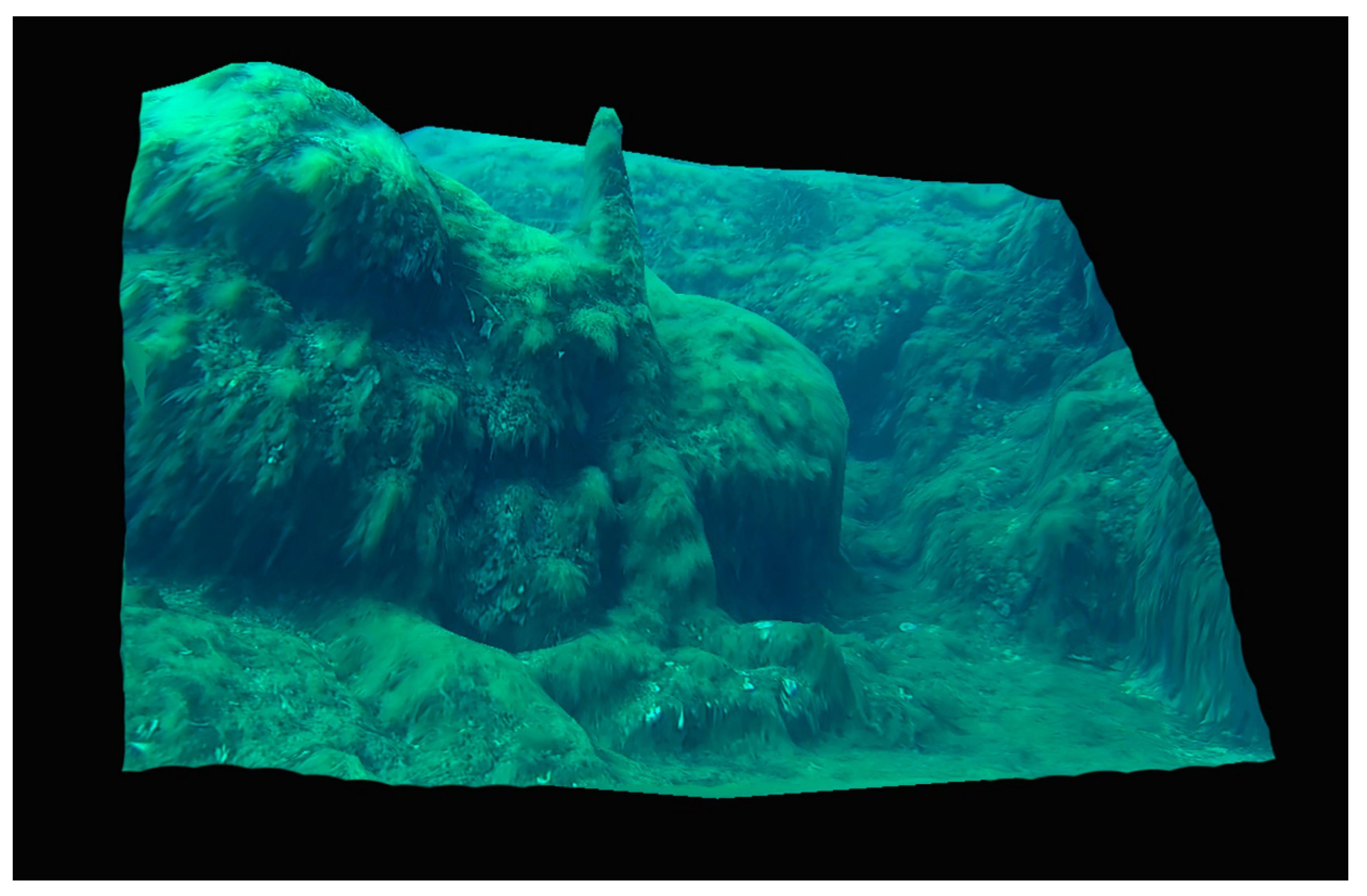
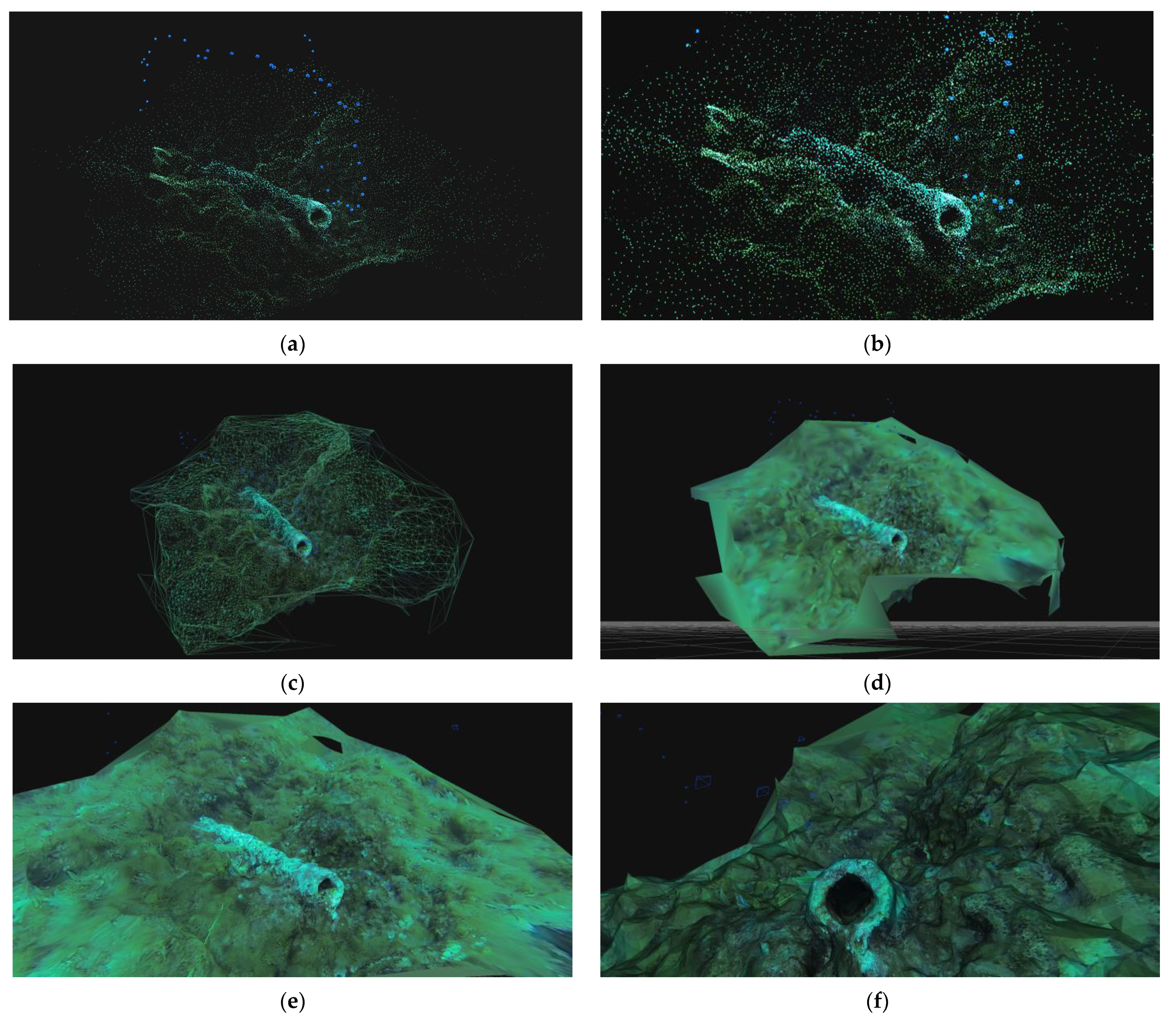
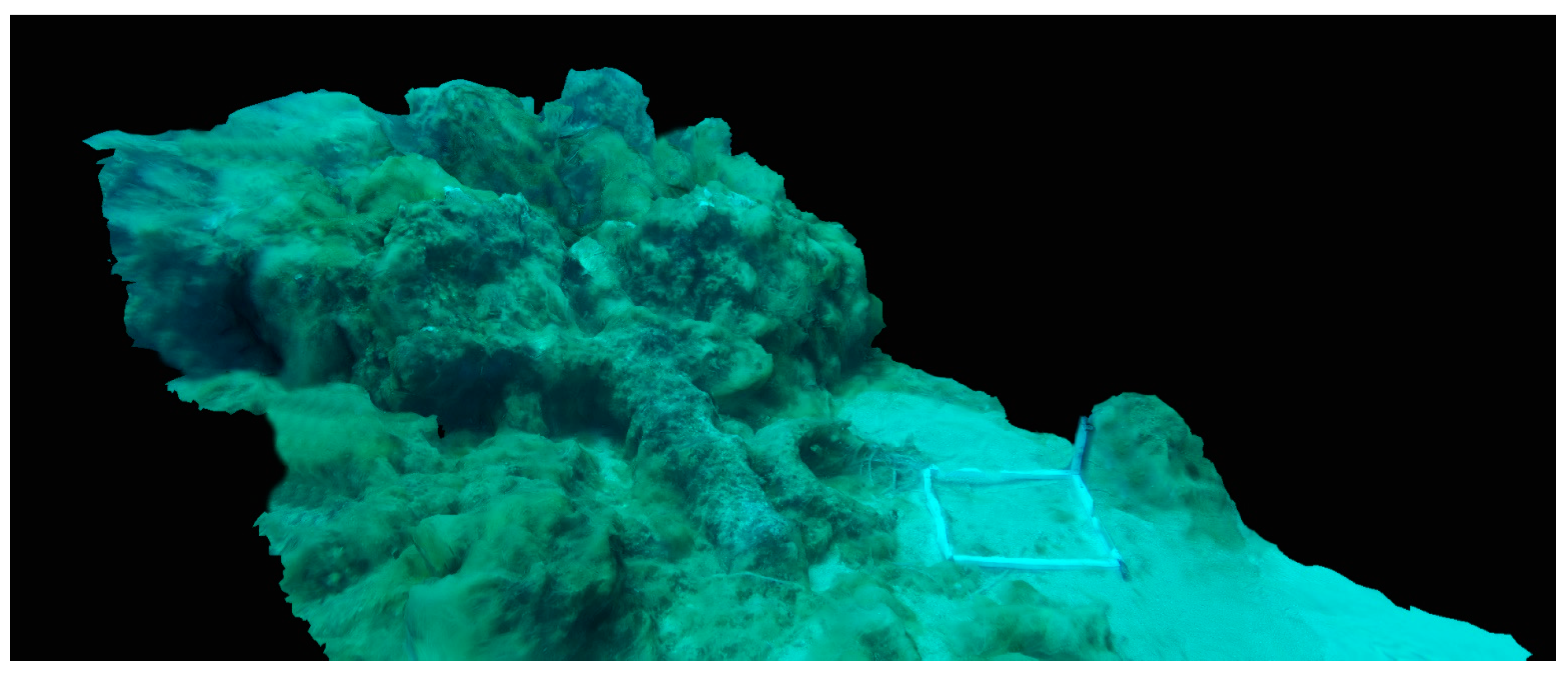
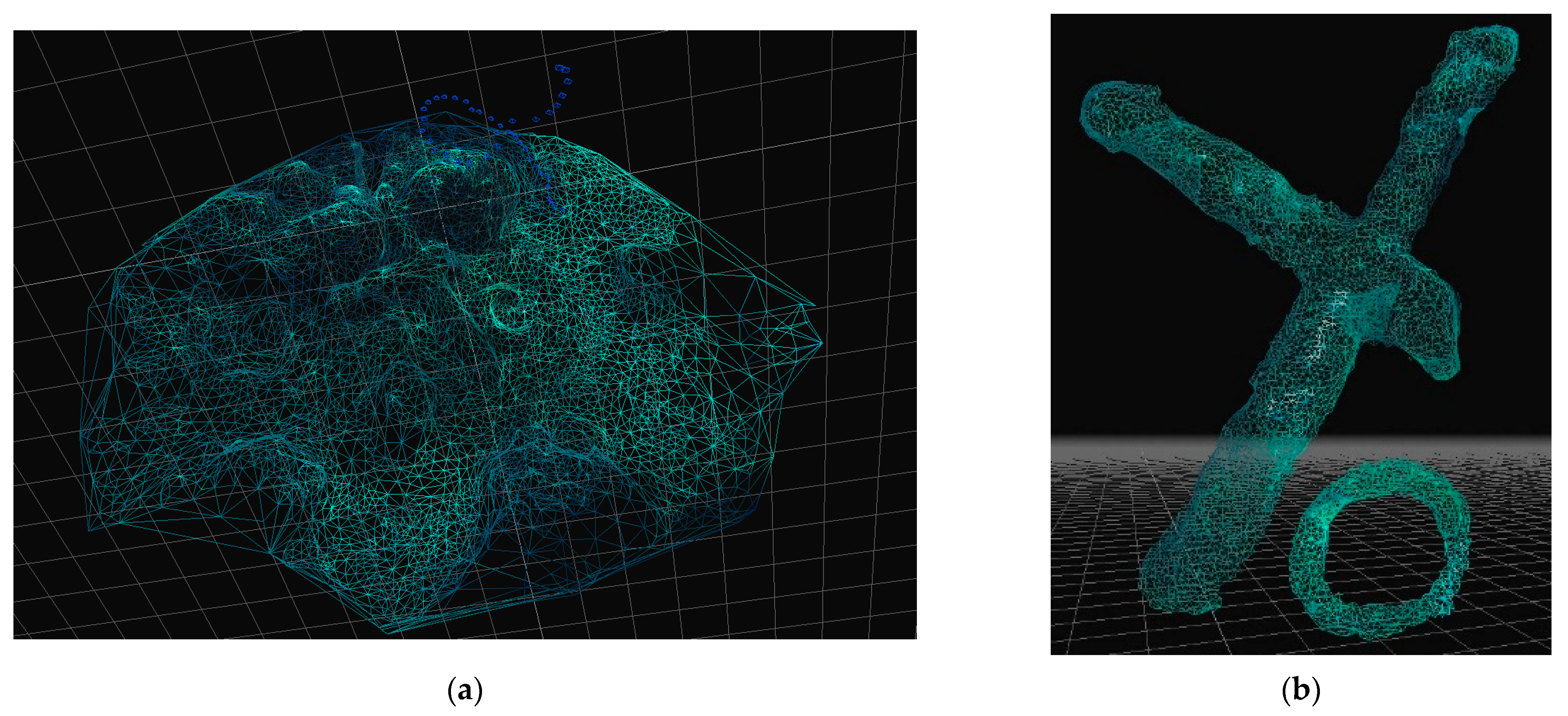

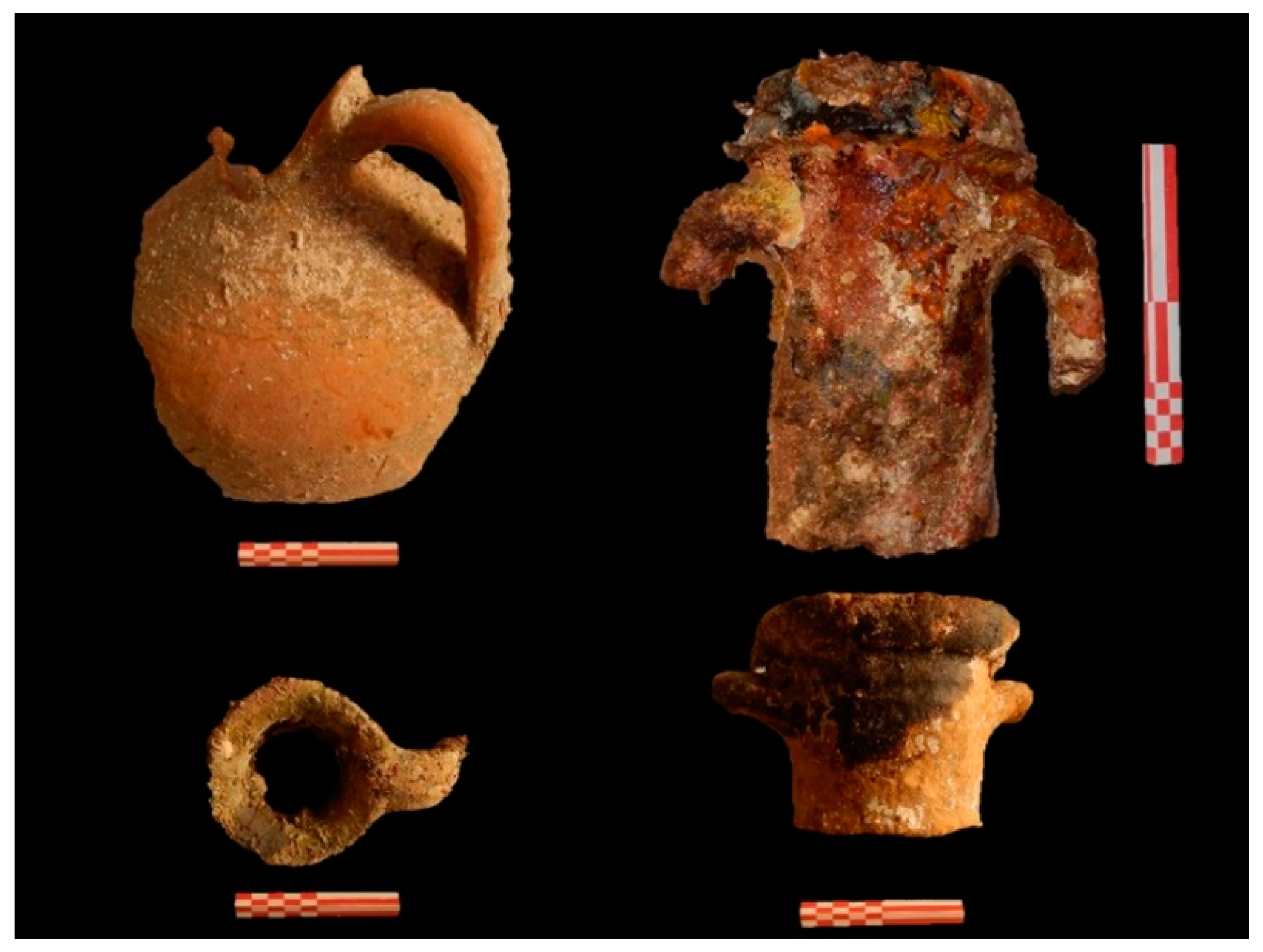
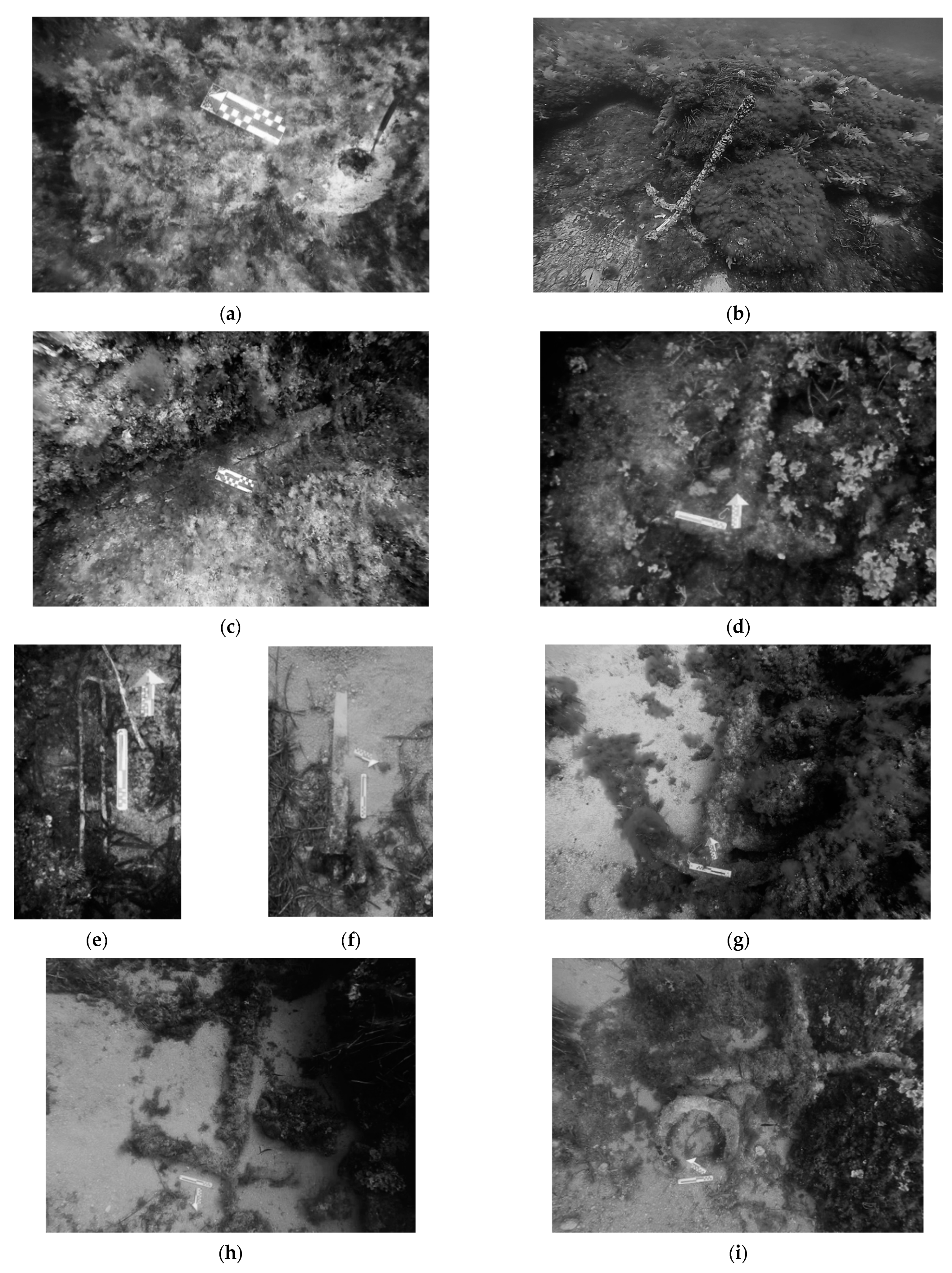
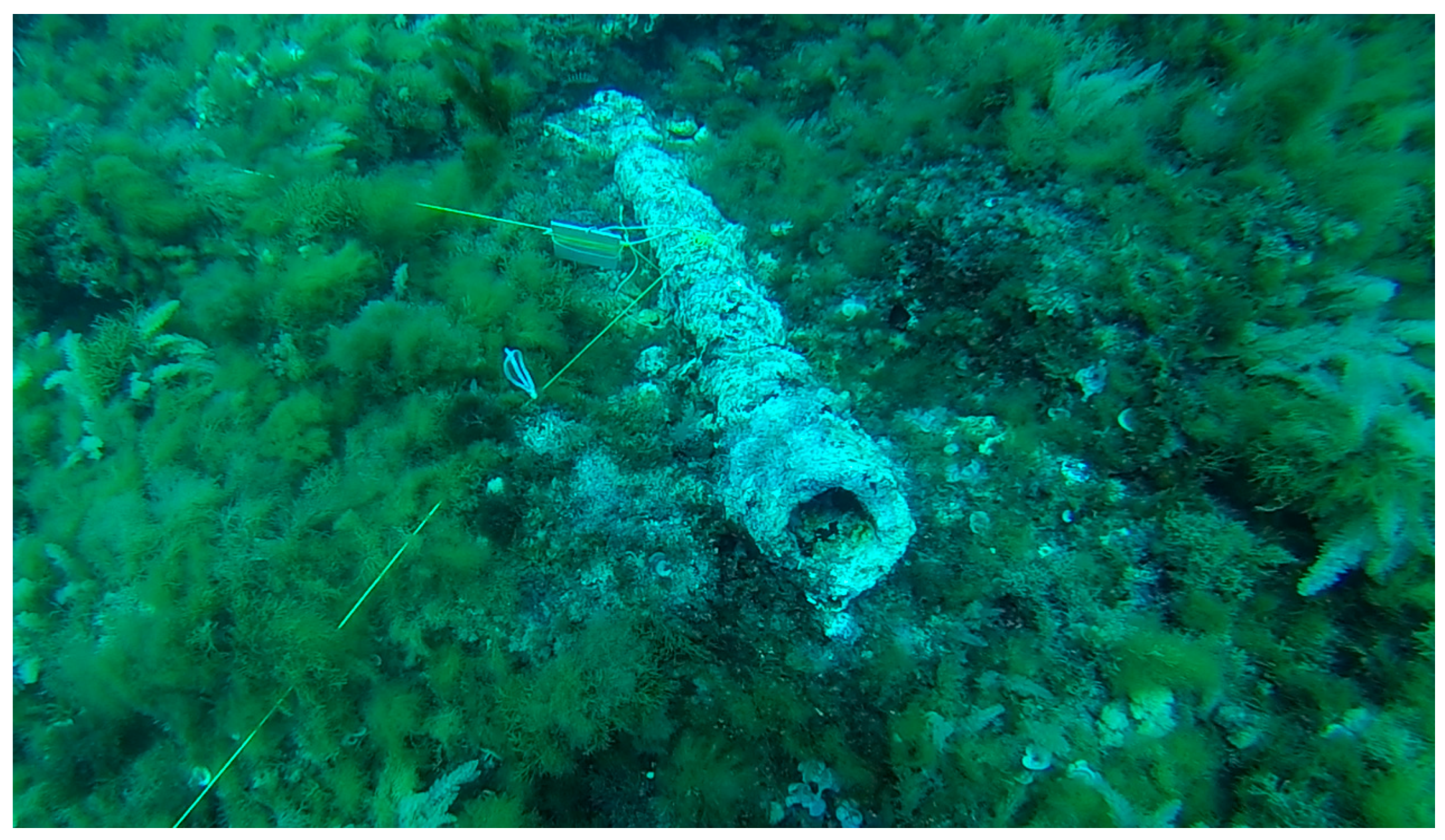
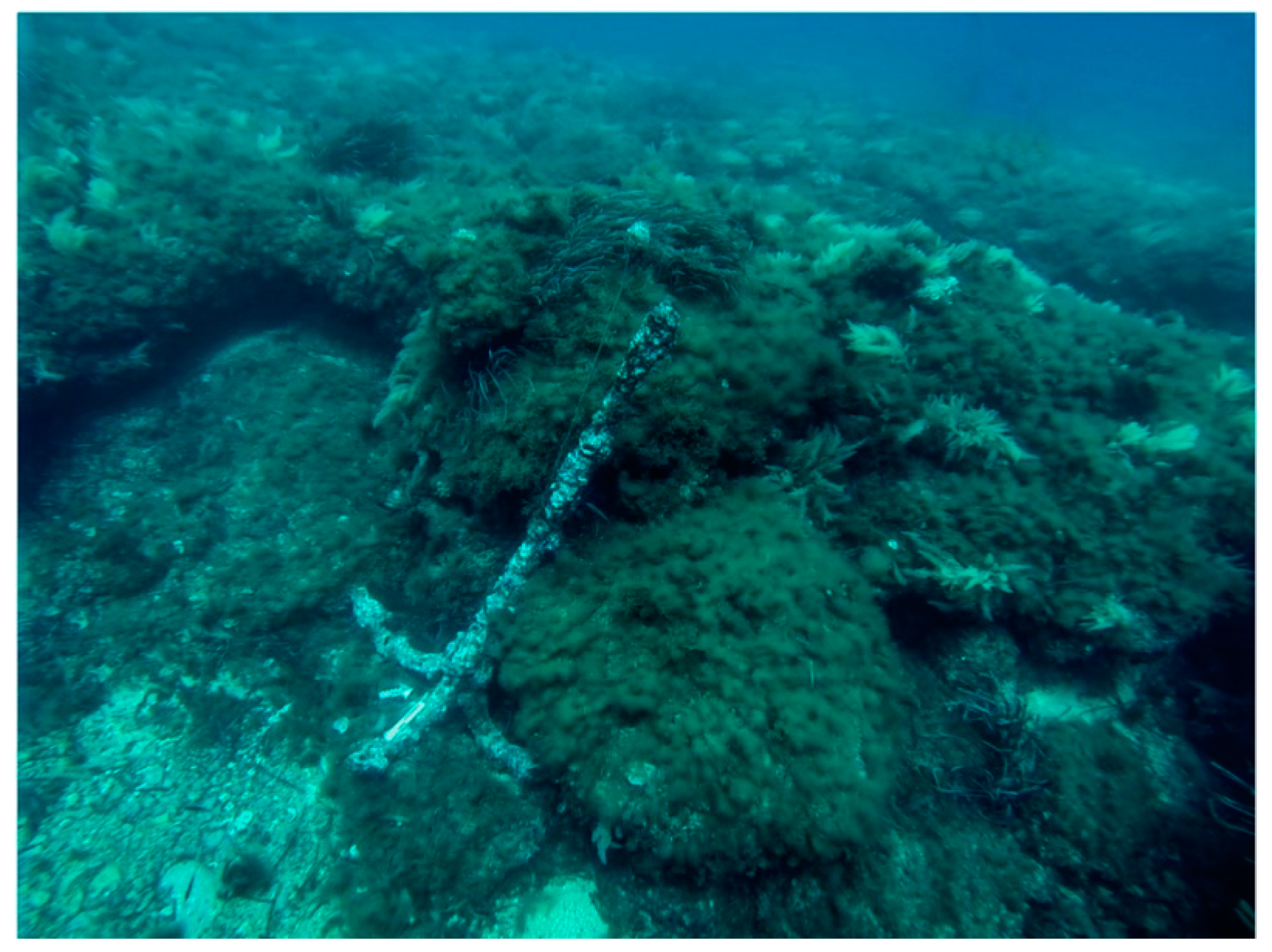
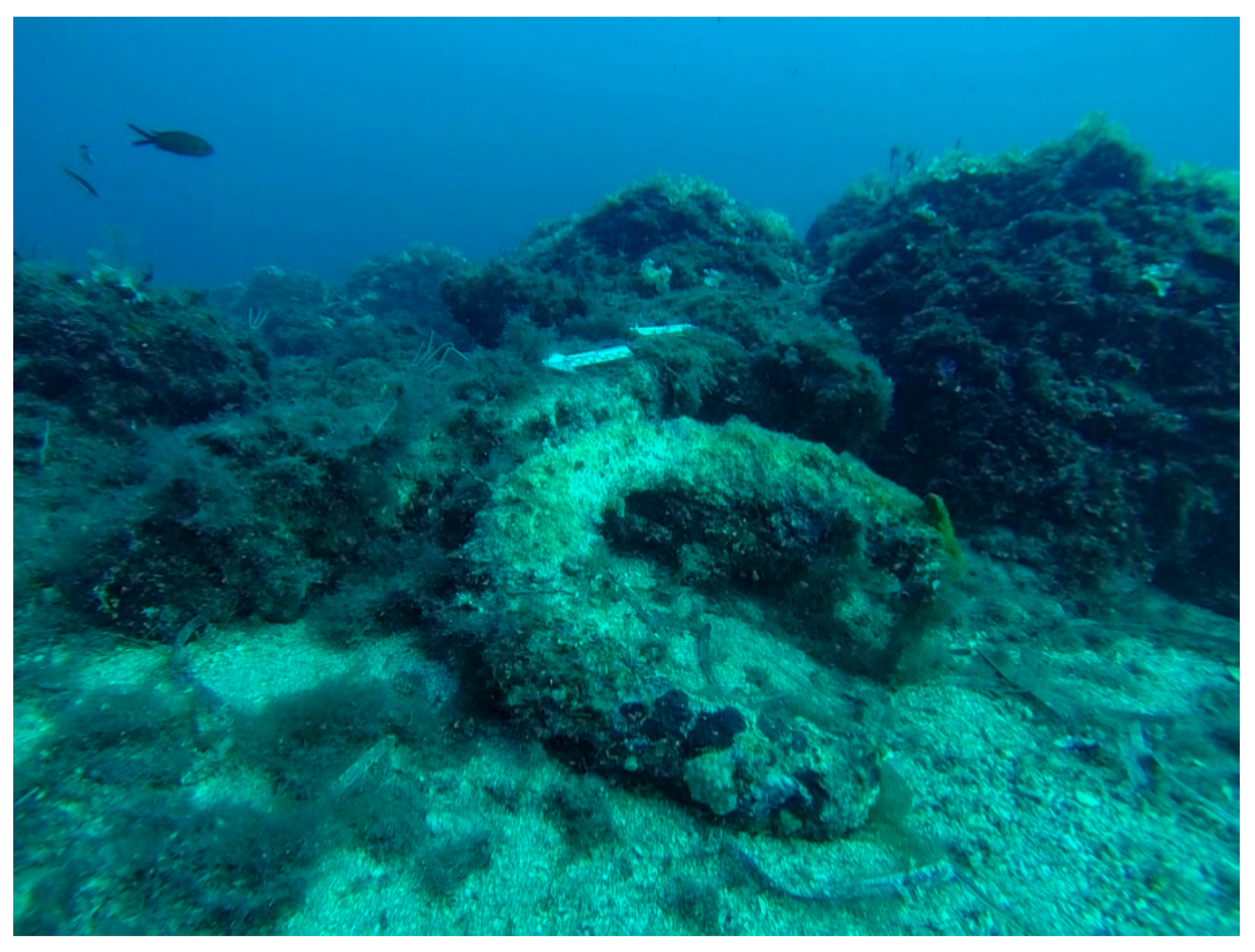

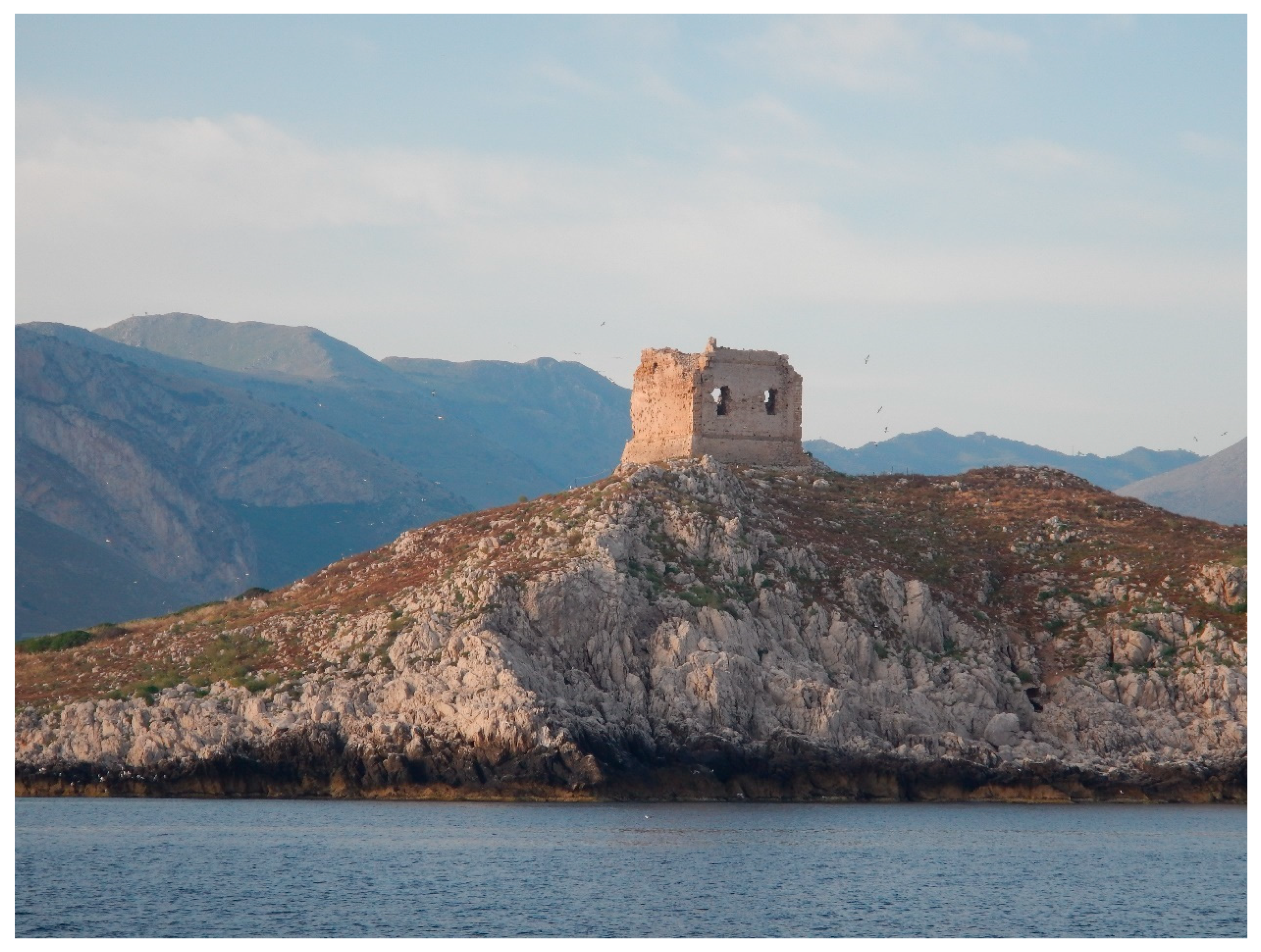
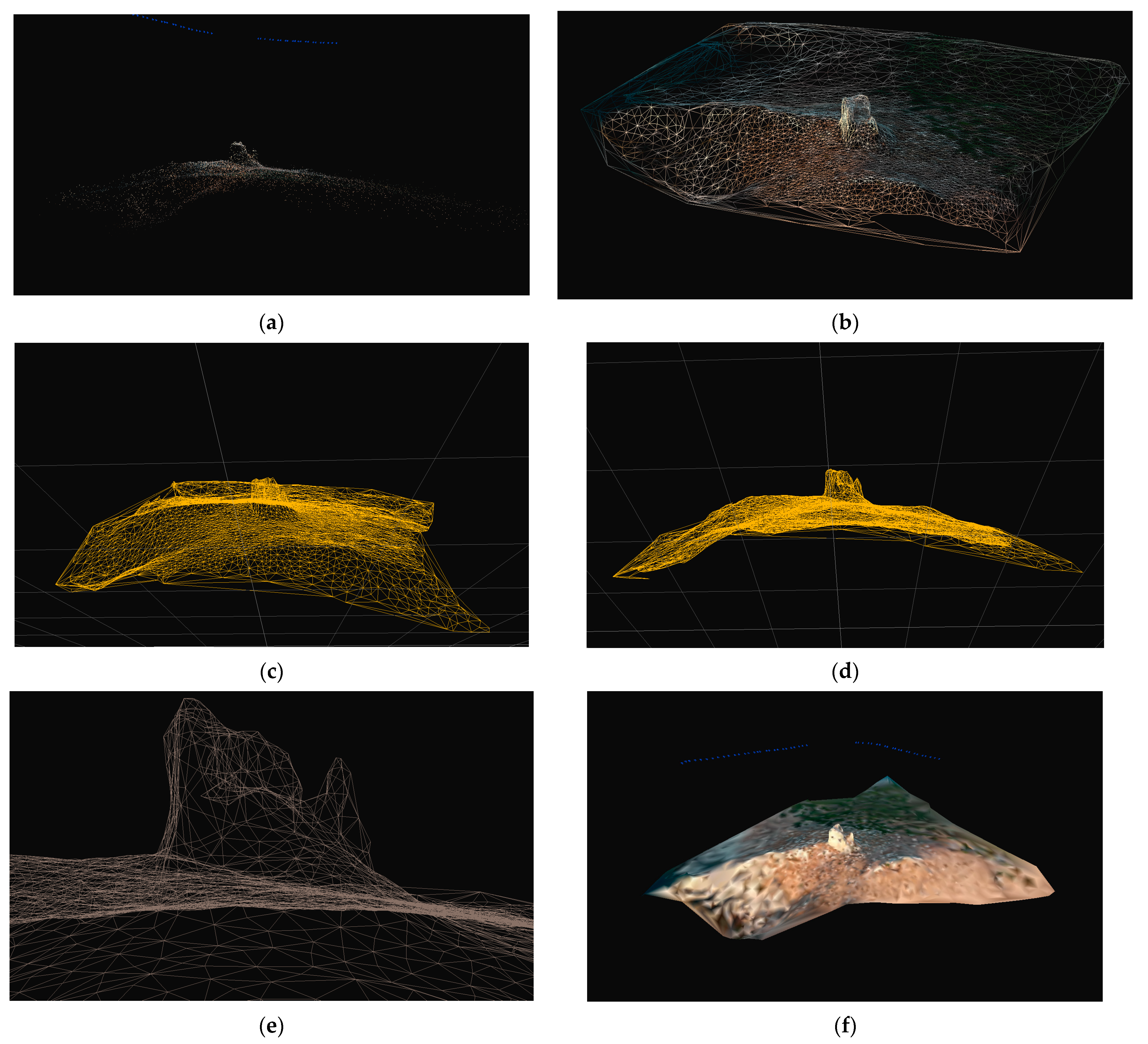

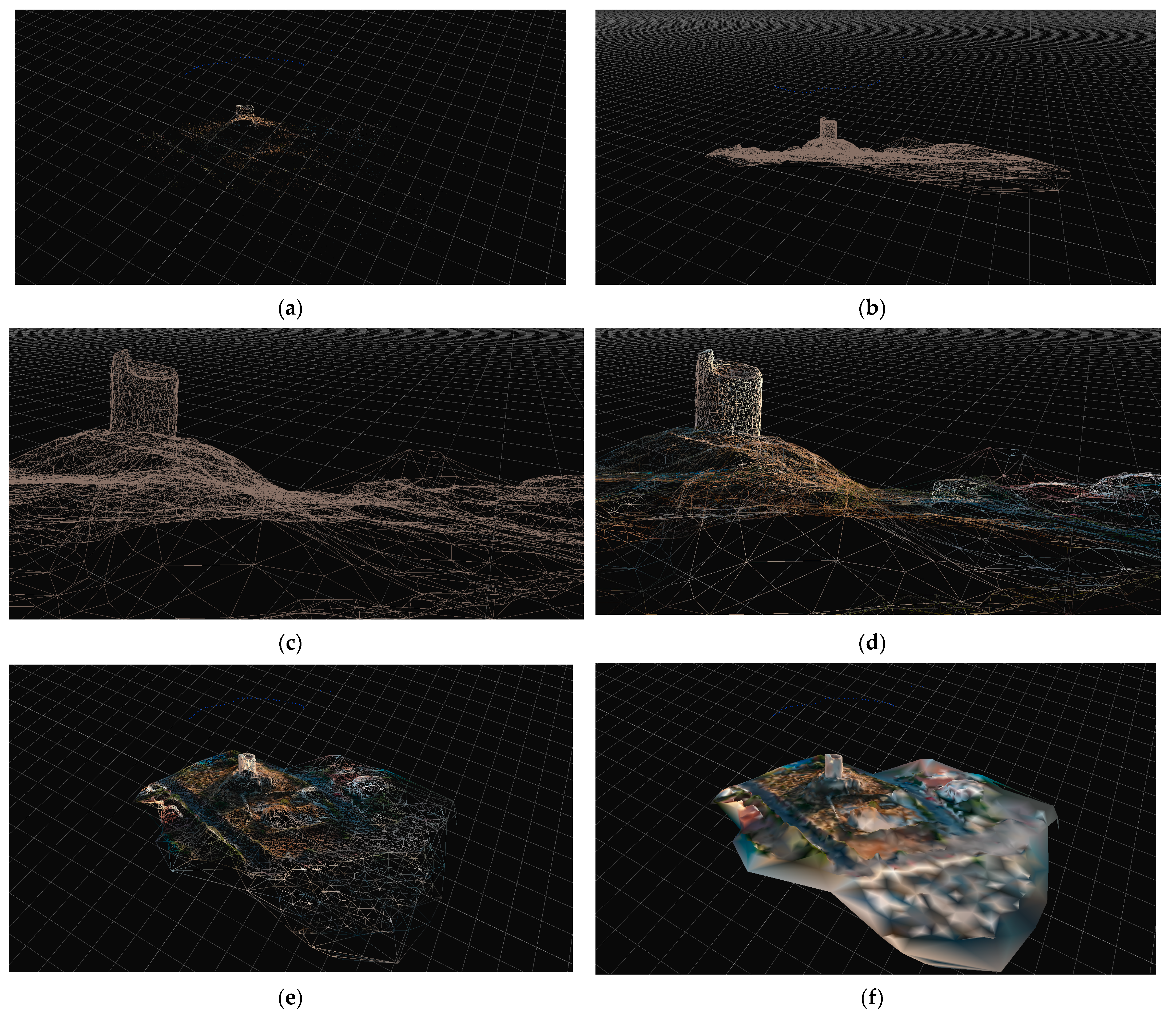

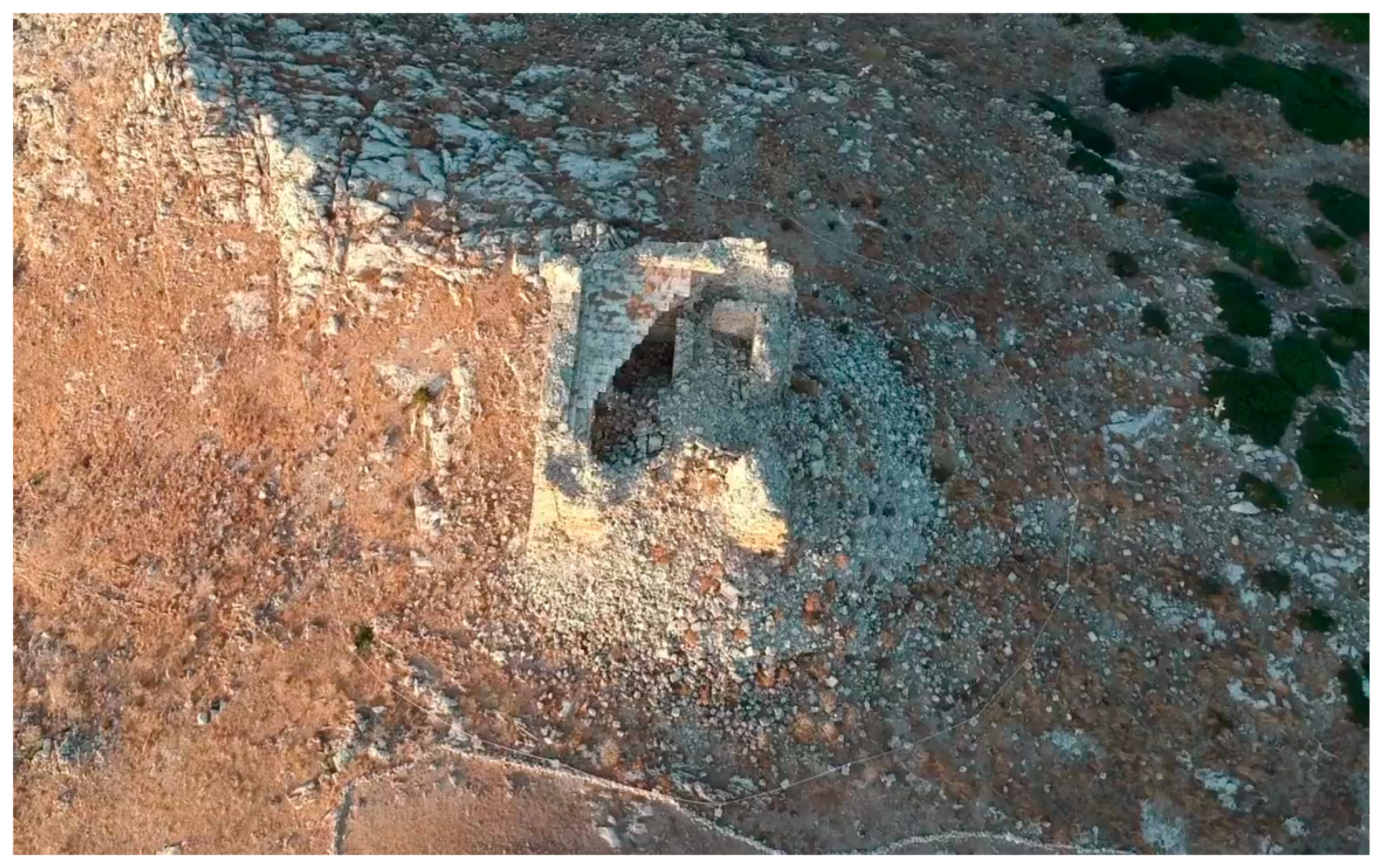
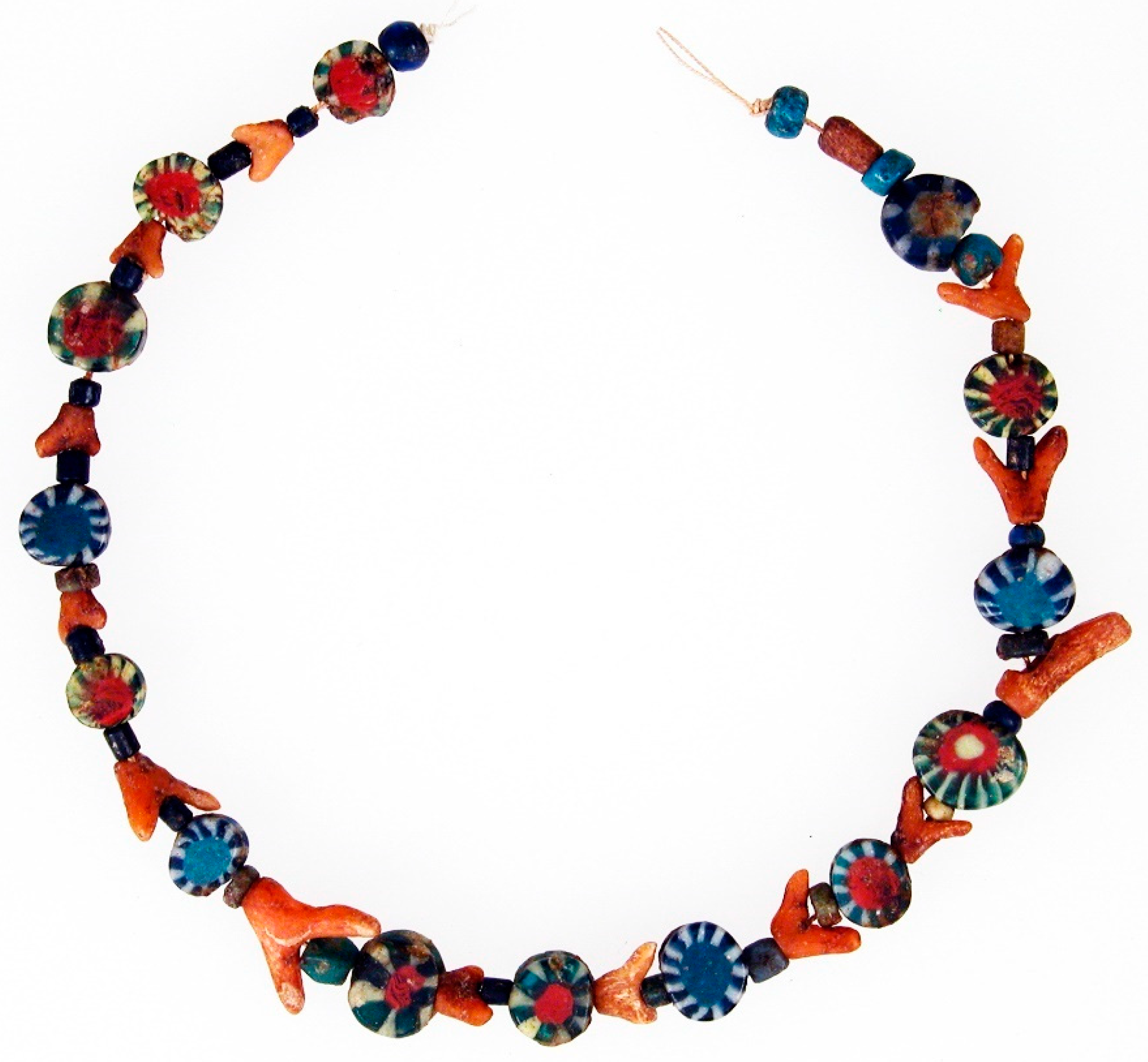
Publisher’s Note: MDPI stays neutral with regard to jurisdictional claims in published maps and institutional affiliations. |
© 2022 by the author. Licensee MDPI, Basel, Switzerland. This article is an open access article distributed under the terms and conditions of the Creative Commons Attribution (CC BY) license (https://creativecommons.org/licenses/by/4.0/).
Share and Cite
Bucci, G. The WAS Project—Waterscape Archaeology in Sicily at Isola delle Femmine (PA, Italy): Submerged and Emerged Heritage. Heritage 2022, 5, 2773-2803. https://doi.org/10.3390/heritage5030144
Bucci G. The WAS Project—Waterscape Archaeology in Sicily at Isola delle Femmine (PA, Italy): Submerged and Emerged Heritage. Heritage. 2022; 5(3):2773-2803. https://doi.org/10.3390/heritage5030144
Chicago/Turabian StyleBucci, Giovanna. 2022. "The WAS Project—Waterscape Archaeology in Sicily at Isola delle Femmine (PA, Italy): Submerged and Emerged Heritage" Heritage 5, no. 3: 2773-2803. https://doi.org/10.3390/heritage5030144
APA StyleBucci, G. (2022). The WAS Project—Waterscape Archaeology in Sicily at Isola delle Femmine (PA, Italy): Submerged and Emerged Heritage. Heritage, 5(3), 2773-2803. https://doi.org/10.3390/heritage5030144






